How to Back Up Windows 10 to Synology NAS (2 Ways)
Saving your Windows 10 files and data to Synology NAS guarantees their safety and accessibility. Your Windows 10 computer can experience system failure or malware attack anytime; hence it's important to have a proper backup solution for your system settings, programs, and personal files.
You can back up Windows 10 to Synology NAS using Qiling Backup Home software and Backup and Restore (Windows 7). Read on as we explain the steps to using both methods.
What Is Synology NAS
Synology NAS is a Network-Attached Storage server that allows you to perform multiple tasks on files using a web-based Synology DiskStation Manager (DSM). With Synology NAS, you can sync files on a cloud station and save and share files over the internet via FTP.
In Windows 10, Synology provides a suitable environment to save your system settings, personal files, important programs, etc. In addition, it allows you to manage files on a web-based file station and back them up using a computer or server. It's, therefore, a great file backup option.
Why Do You Back Up Windows 10 to Synology NAS
As a rule of thumb, you may want to back up Windows to QNAP/Synology to ensure you have a second or third option in case of system failure or malware attack that may lead to data loss. There exist many ways to backup up files on Windows 10. One such way entails the use of Synology NAS.
Unlike other backup methods like local hard drives, external drives, or cloud, Synology NAS stands out as a Windows 10 backup option for various reasons.
First, with Synology NAS, you won't have to keep a physical connection with your computer, as with USB drives. The Synology DiskStation is always on; hence you can connect it to your computer anytime without moving an inch.
Second, Synology NAS has an improved resiliency for data loss since it has multiple internal hard drives. Therefore, if one hard drive fails, you can still access your files through the other drives. This enhances the security and reliability of data stored.
Third, Synology NAS allows you to have a centralized storage location for all your files. You can manage all your computer backups using a single Synology NAS device. This saves on the need to have multiple backup locations for your files. Lastly, the Synology NAS device enhances the security of your data since you won't move around with it and increase the chances of losing your files.
How to Back Up Windows 10 to Synology NAS
Now that you've known the importance of backing up Windows 10 to Synology NAS, you may be eager to know how to do it. There exist two primary ways to backup Windows 10 files to Synology NAS:
1. Using the software, i.e., Qiling Backup Home
2. Using Windows 10 built-in tools.
Below, we'll discuss how to backup Windows 10 to Synology NAS using both methods.
Method 1. Back Up Windows 10 to Synology NAS with Software
The best software to back up Windows 10 to Synology NAS is Qiling Backup Home. This software allows you to completely back up your system and keep all your files and data safe in case of computer damage or malware attack.
With its secure backup and recovery feature, Qiling backup software allows you to safely store and restore backups from Synology NAS, provided you have the correct login credentials to your account. You can back up your files daily, weekly, or monthly to keep their latest copies on Synology NAS.
You can also perform multi-path storage by saving your files to different drives on NAS to guarantee the accessibility of your data if one drive accidentally fails.
Main Features of Qiling Backup Home
As the best backup and restore software, Qiling Backup Home boasts the following features.
- Intelligent backup: Qiling helps save on the storage space and time used to make a backup by only keeping backup copies of the used file system. You won't need to back up the entire file system.
- Hot backup: One attribute that makes this software stand out is that it can back up your files and data while the computer system uses them. You won't need to stop activities running before backing up your device.
- Secure backup and recovery: The software allows you to back up your entire system to Synology NAS securely. The software keeps a complete image of your system to ensure you can easily revert to it in case of a malfunction or virus attack.
- Offsite copy: Once you've backed up your files and data to Synology NAS, the software automatically keeps an offsite copy to a different platform, i.e., FTP. This guarantees an extra layer of backup in the event all systems fail.
- Security zone backup: To safeguard your files from ransomware or malware attacks, Qiling Backup Home allows you to save them to a security zone that is inaccessible to anyone apart from you. Typically, this could be a partition on your computer or NAS.
- Free disk cloning sofatware: The software allows you to keep copies of your hard drive or any other form of storage to ensure you have where to revert to when your computer system fails.
If you want to back up Windows 10 to Synology NAS using Qiling Backup Home, you should first download and install the software on your computer. Luckily, it has a trial version that gives you access to many advanced features.
Steps to Backup Windows 10 to Synology NAS with Qiling Backup
Saving your files and data to Synology NAS using NAS backup software isn't as difficult as you imagined. You'll need to adhere to a few steps and be good to go! To get started with Qiling Backup Home today, follow the below steps.
Step 1. To initiate a backup, click the File backup button option.

Step 2. On the tree view, both local and network files will be shown. You may extend the directory to pick the backup files.
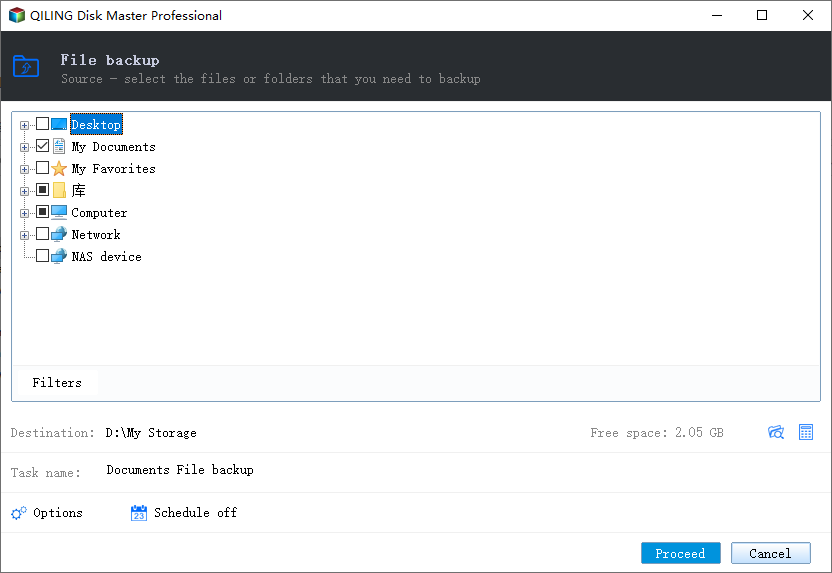
Step 3. Follow the on-screen instructions and choose a location to store the backup.
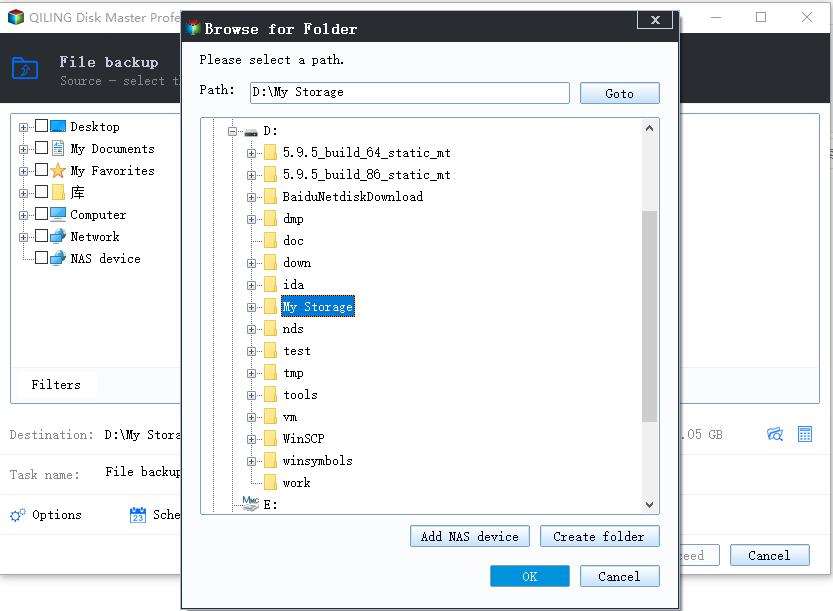
Step 4. Click Options to encrypt the backup with a password in Backup Options.
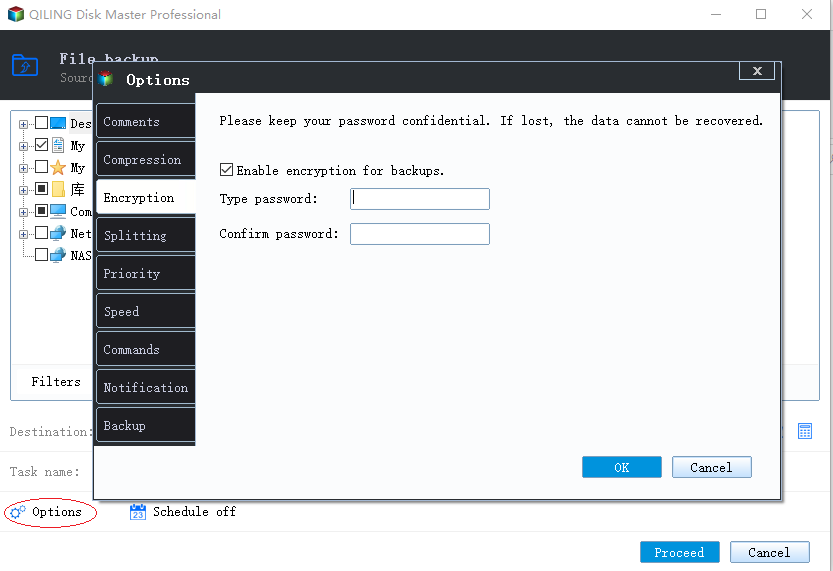
Then click Backup Scheme to specify the backup schedule and start the backup at a certain event. There are also other additional choices you may choose to tailor the backup process to your requirements.
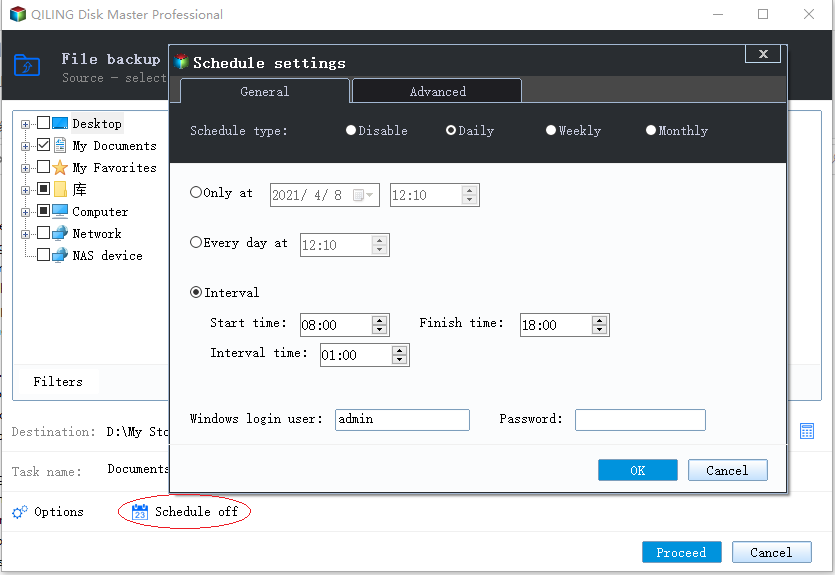
Step 5. The backup may be stored on a local disk, Qiling' online service, or NAS.
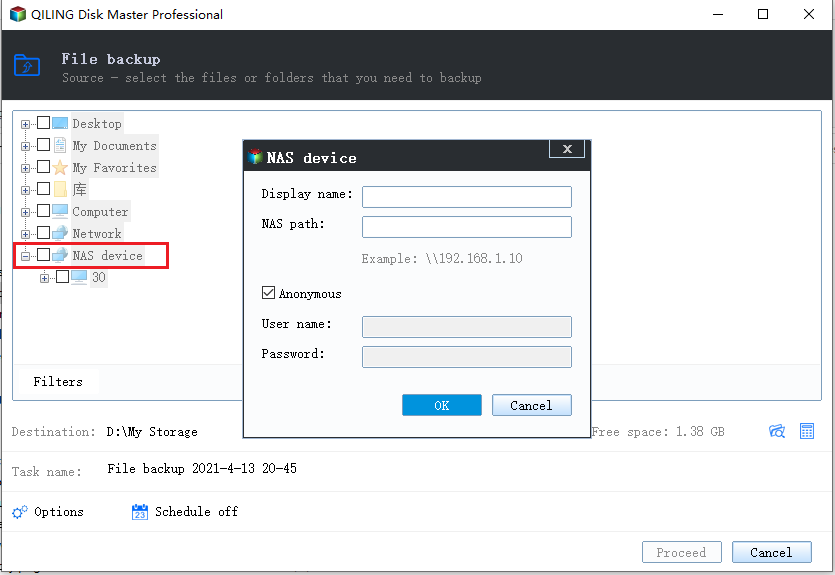
Step 6. Qiling Backup enables customers to back up data to a third-party cloud drive as well as its own cloud drive.
If you want to back up data to a cloud drive provided by a third party, choose Local Drive, scroll down to add Cloud Device, and then add and log in to your account.
Step 7. Click Proceed to begin the backup process. The backup job will be presented as a card on the left side of the panel after it has been finished. Right-click the backup job to handle it further.
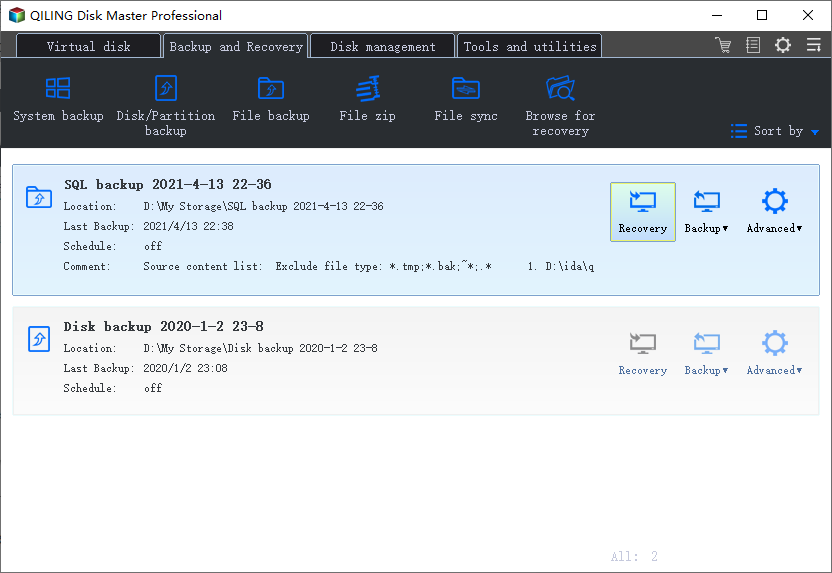
Method 2. Back-Up Windows 10 to Synology NAS with Built-in Tools
One of the Windows 10 built-in tools you can use to back up Synology NAS is Backup and Restore (Windows 7). This feature was initially meant for Windows 7 but found its way into Windows 8 and later Windows 10.
Microsoft introduced this backup feature on Windows 10 because it made it easier to save files and data to local hard drives, external hard drives, the cloud, and even Synology NAS. Suppose you want to back up Windows 10 to Synology NAS using Backup and Restore (Windows 7). In that case, you'll need to select it as one of the options and then provide your network credentials so that the system automatically saves your files.
You can back up anything to Synology NAS: personal files, system settings, or program files. Apart from files and data, Backup and Restore (Windows 7) allows you to create a "System Image", a snapshot of your entire computer. This makes it easier to recover your computer system if anything goes wrong.
Below are the steps to backup Windows 10 to Synology NAS:
Step 1. Type "backup and restore" on the search bar and hit Enter.
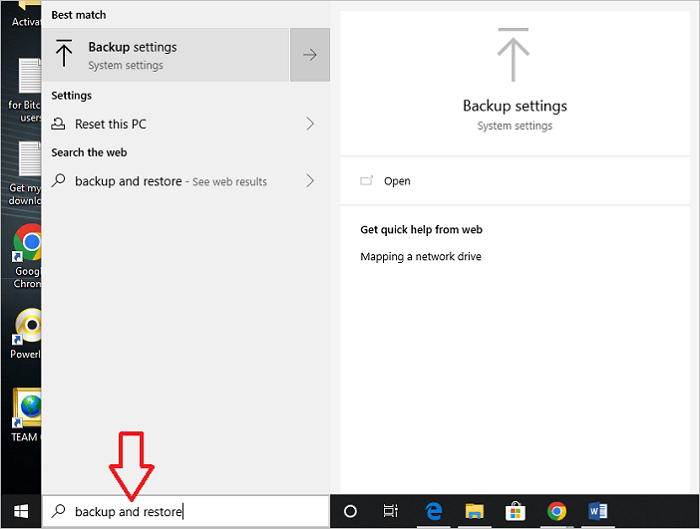
Step 2. On the Windows that opens, click on "Go to Backup and Restore (Windows 7)" under "Looking for an older backup?".
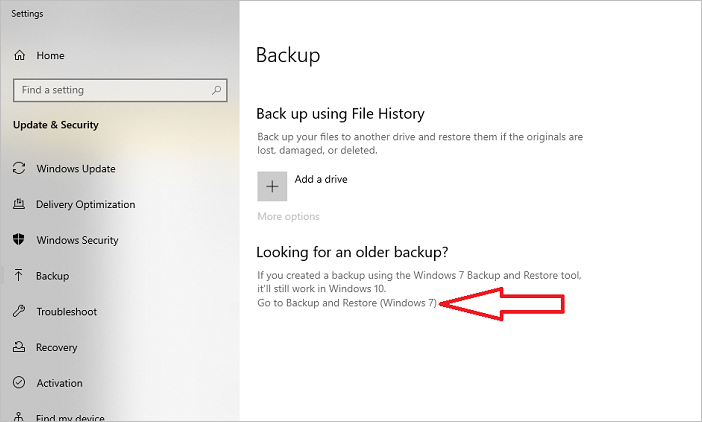
Step 3. Click on "Create a system image".

Step 4. Under "Where do you want to save the backup", choose "On a network location". Next, click the Select button and input the Synology NAS credentials for the network location to save your backup files and data.
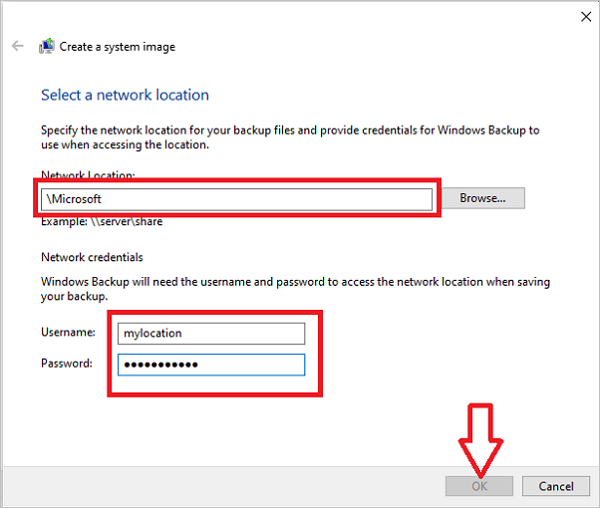
Step 5. Once you've indicated your network details, including username and password, click OK, then Next.
Step 6. Select the drives you want to include in the backup, then click Next.
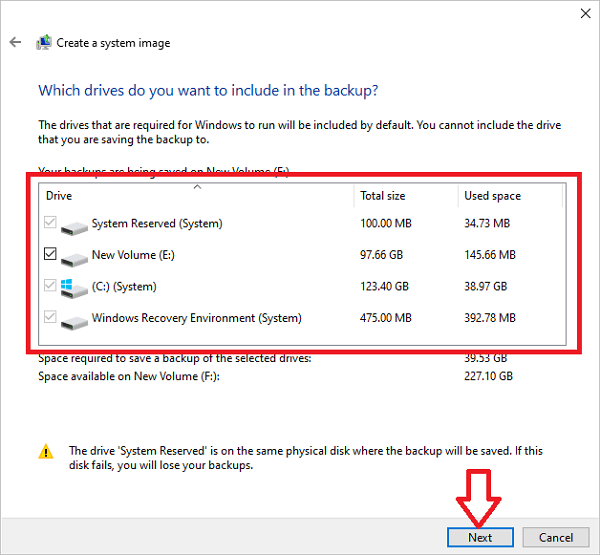
Step 7. Confirm your backup settings on the next Window, then click "Start backup".
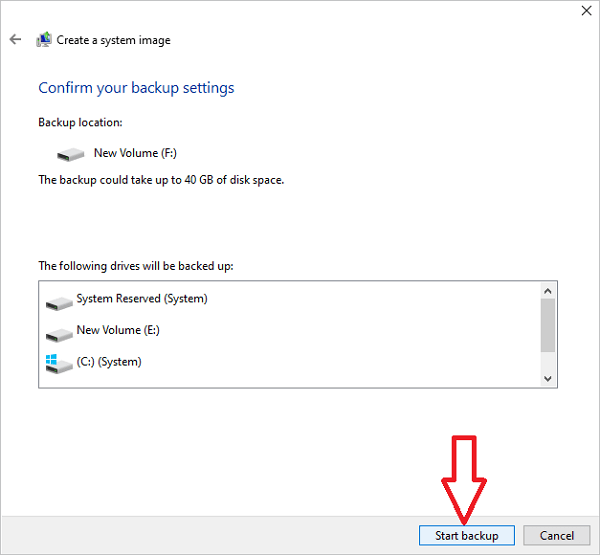
The files from the selected drives will then back up to Synology NAS. This process may take some time, so you need to be patient till it completes.
Conclusion
With Synology NAS, you can manage your files using a web-based Synology DiskStation Manager (DSM). Backing up your Windows 10 files to Synology NAS guarantees their safety and accessibility. It also allows you to sync files on a cloud station and save and share files over the internet via FTP.
Using Synology NAS as your backup location comes with various benefits, including a centralized storage location, resiliency to data loss, and enhanced data security. You can back up Windows 10 to Synology NAS using Qiling Backup Home and Backup and Restore (Windows 7). Between the two methods, we recommend using Qiling Backup Home.
This software allows you to securely save and retrieve backups from Synology NAS, provided you have the correct login credentials to your account. You can back up your files daily, weekly, or monthly to ensure the latest copies get stored on Synology NAS. Download and install a trial version of Qiling Backup Home on your computer today to enjoy its numerous benefits.
Backup Windows 10 to Synology FAQs
To help you understand further about Windows 10 backup to Synology NAS, we've provided a list of related questions and their answers below.
1. How Do I Backup My PC to Synology NAS?
You can achieve this using a third-party tool or Windows built-in tools. The most recommended software to use is Qiling Backup Home. This tool will help you save all your files and data and recover them anytime.
One built-in tool that you can use to back up your PC to Synology NAS is Backup and Recovery (Windows 7). This built-in tool is easy to use and will allow you to save your files to a network location.
2. Does Synology Have a Backup App?
Yes, Synology has several backup applications that offer protection for more devices, DSM applications, and online services. The backup applications also provide alternative ways to secure backup tasks.
3. How Do I Connect Windows to Synology NAS?
You can achieve this through the following steps:
1. Open Windows Explorer and click on "Computer" or "This PC".
2. Next, click on "Map Network drive".
3. On the next window, select a drive letter from the drop-down.
4. Enter the server name and shared folder name for your Synology NAS, i.e., "\\DiskStation\Share1" and click Finish.
5. Enter the username and password for your DSM. Click OK.
6. You'll now have your shared network folder mapped and accessible under "Computer" or "This PC".
Related Articles
- How to Backup Data from Hard Drive without OS in 3 Ways
- Top 10 Best Email Backup Software in 2022 [New]
- Ghost Windows 7 Using Hard Drive Ghost Software
- How to Clone Windows 10/8/7 to Another Computer